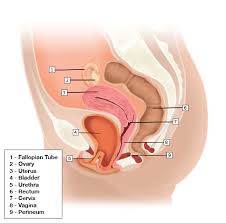Cystocele Causes, Symptoms, Diagnosis and Treatment

What Is Cystocele?
A Cystocele, also called a prolapsed or dropped bladder, is the bulging or dropping of the bladder into the vagina.
The bladder, located in the pelvis between the pelvic bones, is a hollow, muscular, balloon-shaped organ that expands as it fills with urine.
During urination, also called voiding, the bladder empties through the urethra, located at the bottom of the bladder.
The urethra is the tube that carries urine outside of the body. The vagina is the tube in a woman’s body that runs beside the urethra and connects the womb, or uterus, to the outside of the body.
For a mild or moderate cystocele nonsurgical treatment is often effective.
In more severe cases, surgery may be necessary to keep the vagina and other pelvic organs in their proper positions.
Causes Of Cystocele:
A cystocele occurs when the muscles and supportive tissues between a woman’s bladder and vagina weaken and stretch, letting the bladder sag from its normal position and bulge into the vagina or through the vaginal opening. In a cystocele, the bladder tissue remains covered by the vaginal skin.
Possible causes of cystocele include:
- Pregnancy and vaginal childbirth
- Being overweight or obese
- Repeated heavy lifting
- Straining with bowel movements
- A chronic cough or bronchitis
Certain factors increase the probability of developing cystocele. They include:
- Childbirth. Women who have vaginally delivered one or more children have a higher risk of cystocele.
- Aging. Risk of developing cystocele increases with age, especially after menopause
- Hysterectomy.
- Genetics. Some women are born with weaker connective tissues, making them more susceptible to cystocele
- Obesity. Women who are overweight or obese are at higher risk of cystocele.
Symptoms Of Cystocele:
Signs and symptoms may include:
- A feeling of fullness or pressure in pelvis and vagina
- Increased discomfort when one strains, coughs, bears down or lifts
- A feeling that one hasn’t completely emptied his/her bladder after urinating
- Repeated bladder infections
- Pain or urinary leakage during sexual intercourse
- In severe cases, a bulge of tissue that protrudes through the vaginal opening and may feel like sitting on an egg
Treatment Of Cystocele:
Diagnosis tests include:
- A pelvic exam
- Bladder tests
- Urine tests
- Filling out a questionnaire about symptoms
Treatment Of Cystocele:
The following treatment options are available:
- A supportive device (pessary).
- Estrogen therapy.
By : Natural Health News




